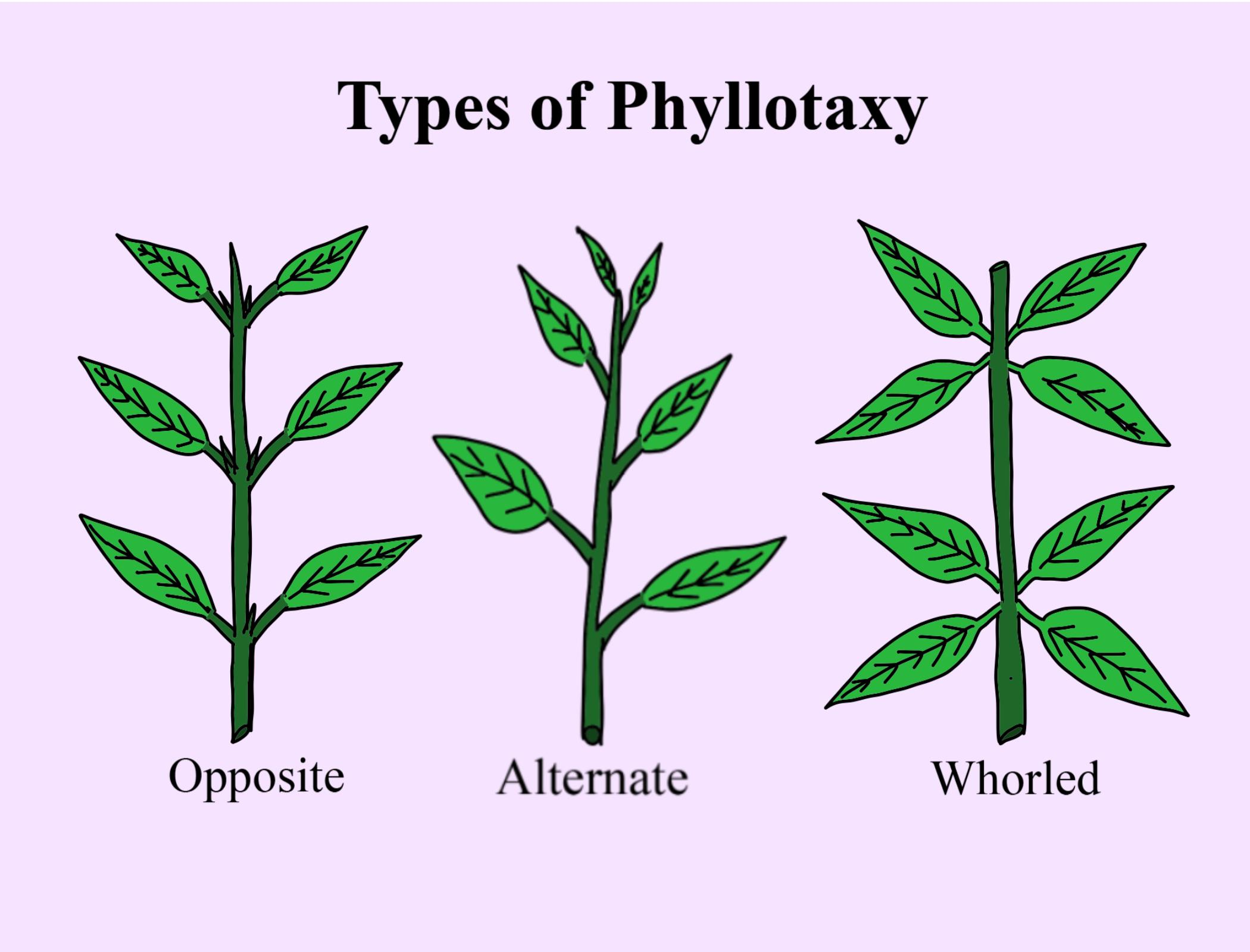
Explain with different types of examples, the different types of phyllotaxy.
Answer
479.7k+ views
1 likes
Hint: Phyllotaxy is a phenomenon related to the organization of food producers of the plant. It helps the plant to distribute equal or near to equal sunlight among the leaves. It varies depending upon the type of plant.
Complete answer:
The word phyllotaxy comes from 2 Greek words phyllon- leaves and taxis which means arrangement. Therefore the arrangement of leaves on the branches of the stem or on the stem directly is known as phyllotaxy.
There are 3 types of phyllotaxy: they are
1. Alternate
2. Alternate
3. Whorled
1. Alternate phyllotaxy is an arrangement of leaves in which one leaf is present at each node.
All the leaves lie in the same plane.
examples: hibiscus
2. Opposite phyllotaxy: in this type of phyllotaxy; two leaves are present on each node. The leaves are opposite to each other.
Opposite phyllotaxy is classified into two more types; they are:
a)Opposite decussate: in this, the leaves of 2 adjacent nodes lie at 90 degrees to each other.
Example: Calotropis
b)Opposite superimposed: in this 2 leaves of adjacent nodes lie at the same plane.
Example: Eugenia
3. Whorled phyllotaxy: In this type of phyllotaxy, three or more than three leaves are present around the single node
Additional Information:
1. Alternate phyllotaxy is also known as spiral phyllotaxy.
2. Whorled phyllotaxy is also known as verticillate type.
3. Node is a place where the leaves are attached to the stem.

Note: Quisqualis indica is an exception because it exhibits 2 types of opposite phyllotaxy: decussate and superimposed. It is commonly known as rangoon creeper.
Complete answer:
The word phyllotaxy comes from 2 Greek words phyllon- leaves and taxis which means arrangement. Therefore the arrangement of leaves on the branches of the stem or on the stem directly is known as phyllotaxy.
There are 3 types of phyllotaxy: they are
1. Alternate
2. Alternate
3. Whorled
1. Alternate phyllotaxy is an arrangement of leaves in which one leaf is present at each node.
All the leaves lie in the same plane.
examples: hibiscus
2. Opposite phyllotaxy: in this type of phyllotaxy; two leaves are present on each node. The leaves are opposite to each other.
Opposite phyllotaxy is classified into two more types; they are:
a)Opposite decussate: in this, the leaves of 2 adjacent nodes lie at 90 degrees to each other.
Example: Calotropis
b)Opposite superimposed: in this 2 leaves of adjacent nodes lie at the same plane.
Example: Eugenia
3. Whorled phyllotaxy: In this type of phyllotaxy, three or more than three leaves are present around the single node
Additional Information:
1. Alternate phyllotaxy is also known as spiral phyllotaxy.
2. Whorled phyllotaxy is also known as verticillate type.
3. Node is a place where the leaves are attached to the stem.

Note: Quisqualis indica is an exception because it exhibits 2 types of opposite phyllotaxy: decussate and superimposed. It is commonly known as rangoon creeper.
Recently Updated Pages
Master Class 11 Economics: Engaging Questions & Answers for Success

Master Class 11 Business Studies: Engaging Questions & Answers for Success

Master Class 11 Accountancy: Engaging Questions & Answers for Success

Master Class 11 English: Engaging Questions & Answers for Success

Master Class 11 Computer Science: Engaging Questions & Answers for Success

Master Class 11 Maths: Engaging Questions & Answers for Success

Trending doubts
Which one is a true fish A Jellyfish B Starfish C Dogfish class 11 biology CBSE

State and prove Bernoullis theorem class 11 physics CBSE

1 ton equals to A 100 kg B 1000 kg C 10 kg D 10000 class 11 physics CBSE

In which part of the body the blood is purified oxygenation class 11 biology CBSE

One Metric ton is equal to kg A 10000 B 1000 C 100 class 11 physics CBSE

Difference Between Prokaryotic Cells and Eukaryotic Cells




